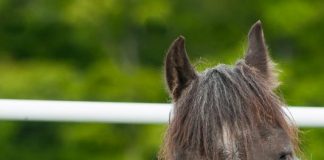
Winter is here, and that lovely horse of yours—the one who looked gorgeous at the summer shows—is now hiding in a wooly mammoth coat. But even if the two of you plan to lay low this winter, don’t assume that you’re off the hook for regular grooming.
But what if it’s 25°F and bathing your horse is out of the question? Here are a few grooming tips for your horse this winter so that you can keep him looking his best, even during the coldest months of the year.
1. Loosen the dirt
Long coat or not, you can easily (well, sort of easily) remove a great deal of the dust, dirt, and dried mud stuck in your horse’s long coat.
◆ Start with a curry comb or grooming gloves. While a basic curry comb is a good tool any time of year for removing muddy debris and dust, elbow grease is essential in the winter for removing dust and dirt from deep in your horse’s coat. Grooming gloves are similar, but they allow for a closer feel of your horse’s curved surfaces and can also be used on the face and legs.
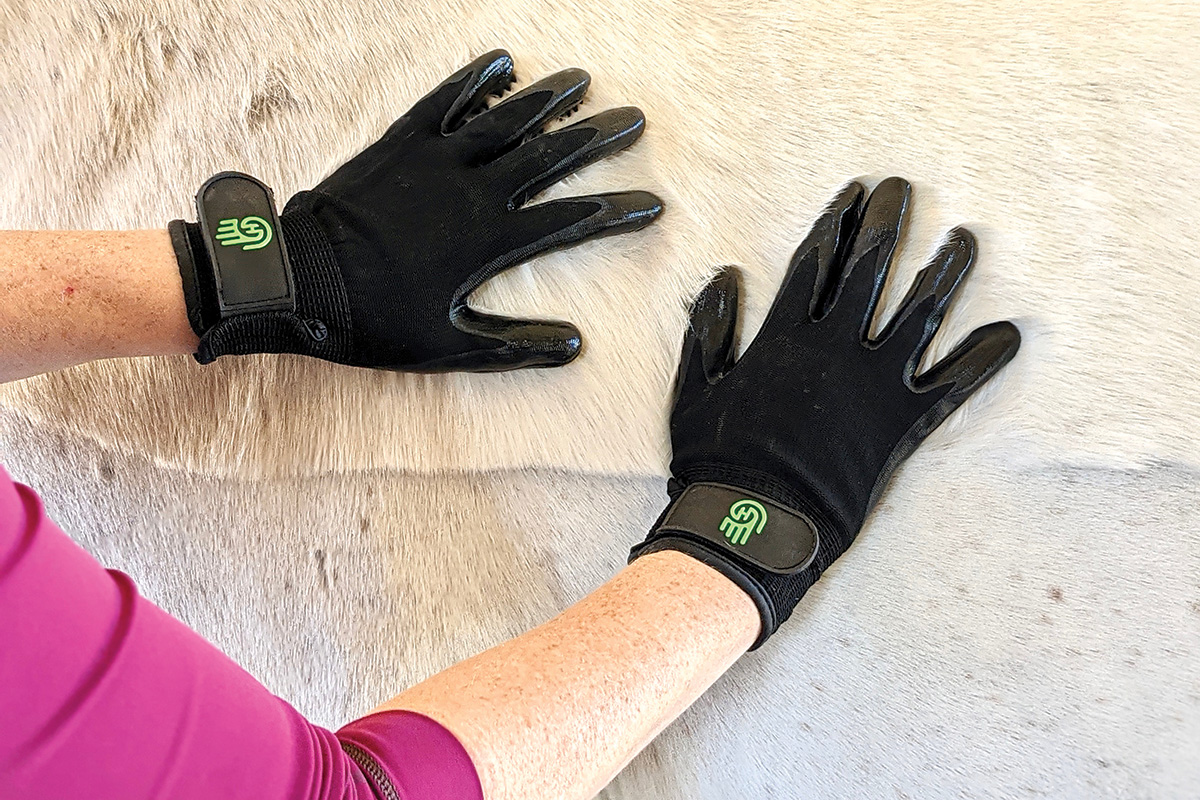
◆ Try a shedding blade. The same shedding blade that comes in handy during your horse’s spring shed-out also works well to etch off those big dried mud stains.
2. Remove the dirt
But simply loosening the dust and dirt isn’t enough; you need to remove it as well.
◆ Brush with a flicking motion. A stiff-bristled dandy brush can be quite helpful for removing most of the dust you shook loose with the currycomb. Use your wrists to flick away all that dust. Softer body brushes can also be useful, and their gentle touch is required around your horse’s legs.
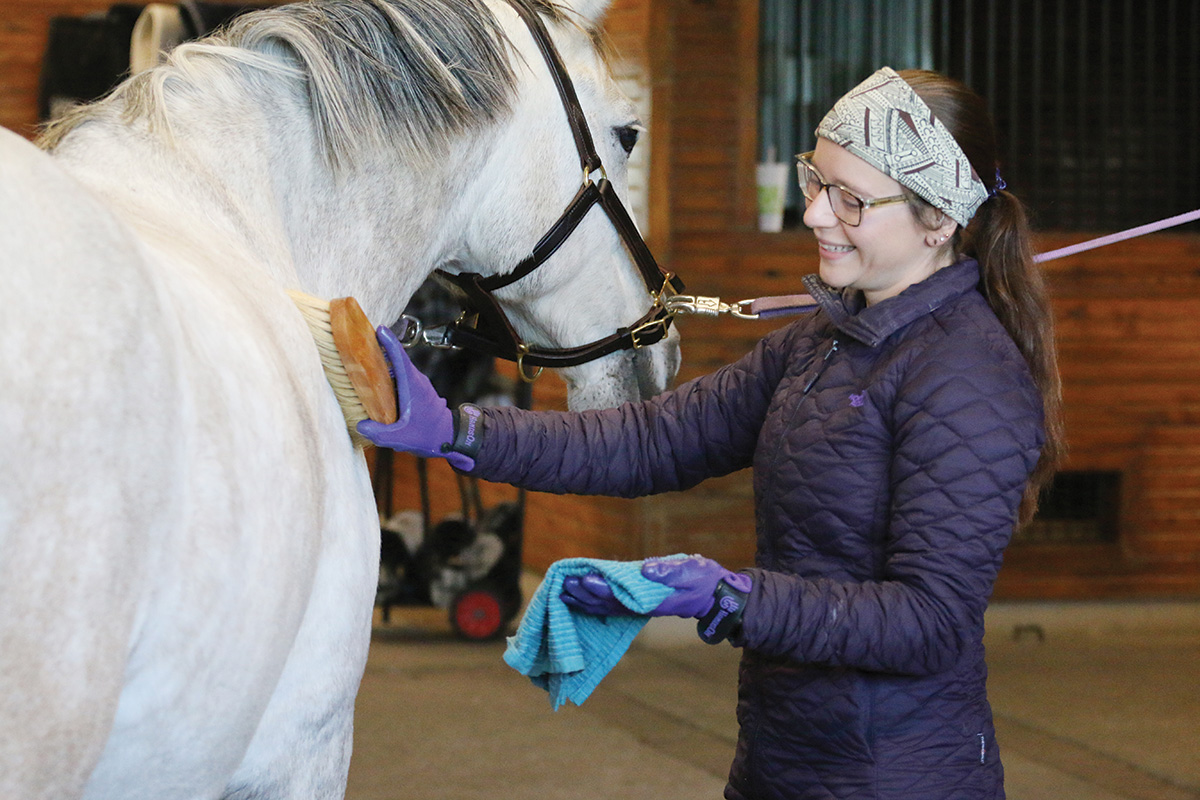
◆ Try a vacuum. If he’s cooperative with the idea (and it may take some careful training to get him there), using a horse-safe vacuum can be an excellent—and dry!—way to remove more dirt than you could probably achieve with brushing alone.
Some horse vacuums come with brush-like attachments to help you safely whisk away the dirt. This just might be your ideal winter bathing replacement, especially if you plan to attend a winter show, clinic, or other event.
3. Use a spot stain remover
During the summer, we often break out the hose to deal with things like sweat stains and green manure spots. If the temperatures are too cold for that, you may still be able to perform some spot cleaning without getting your horse very wet.
◆ Use a commercial product. Sometimes called a “waterless bath” or “waterless shampoo,” these products are (obviously) still moist, so you may have to avoid applying them on frigid winter days. But for mild winter days, these products can be a great way to clean your horse without soaking his entire coat, and they’re often quite effective at removing unsightly stains.
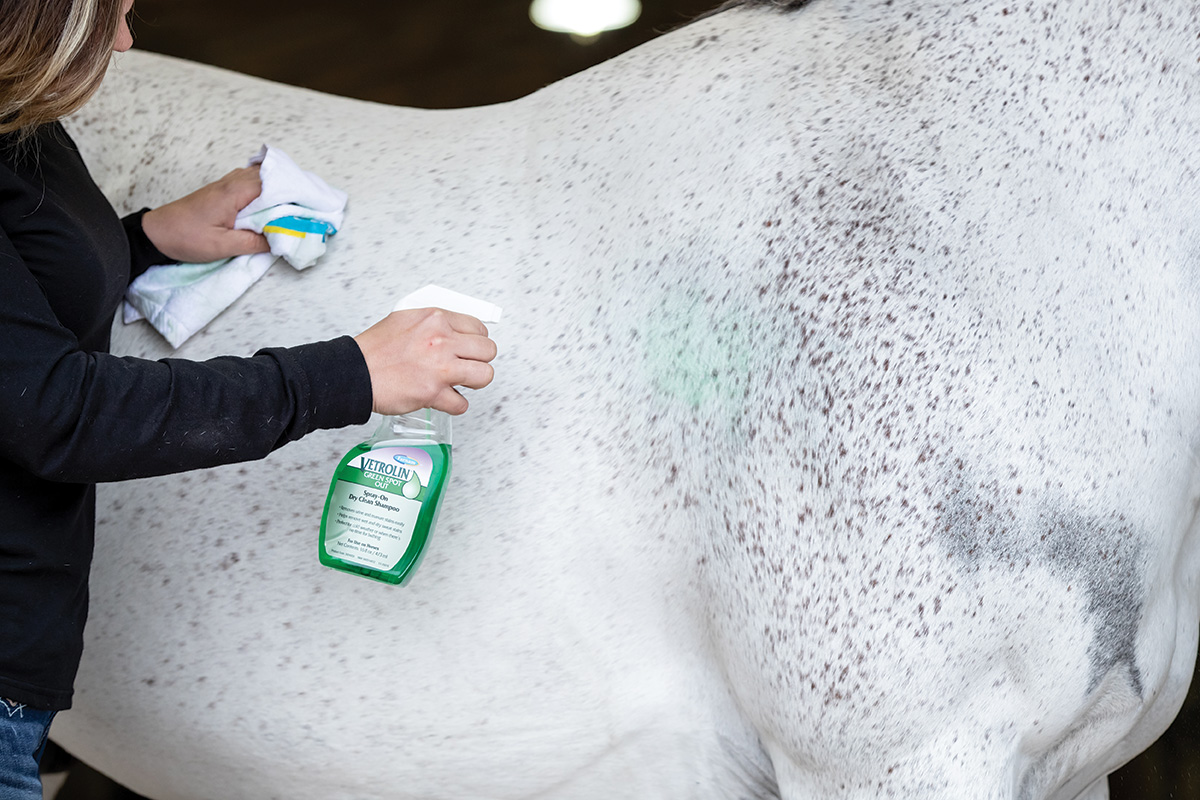
This technique may be more effective on clipped horses or those with naturally short winter coats, rather than super-fuzzy animals. After application, dry the spot with a soft towel.
◆ Try a home solution. For small stains, you might be able to clean them with a small towel dipped in rubbing alcohol, but you don’t want to overdo this method as it can dry out the horse’s coat.
4. Maintain manes and tails
Regular mane and tail grooming regimens apply to your horse in the winter just the same as the summer, but there are a couple of extra tips for preventive measures you can take:
◆ Try a mud knot for tails. Depending on your climate, mud can be a significant issue in the winter, but you can help protect your horse’s tail by using a simple mud knot. It will protect his tail and save on grooming time.
◆ Keep his mane shorter. If it’s too cold to use mane detangler, try to keep your horse’s mane combed frequently. You can make the job even easier by shortening his mane during the winter to limit the amount of mud and debris that it entangles.
5. Think about hooves
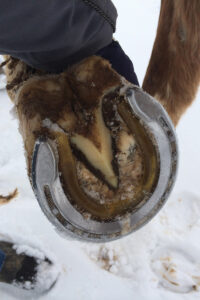
Locations that experience prolonged temperatures below freezing may develop hard, frozen ground. This can be very difficult on your horse.
◆ Talk to your farrier. If the frozen ground is uneven and painful for your horse to walk on, your farrier may recommend making temporary adjustments, such as shoeing a normally barefoot horse or adding borium for traction to steel shoes.
◆ Watch out for snowballs. When bringing your horse into the stable after turnout, be sure to remove any packed snow that has developed on his soles; this can be quite uncomfortable for him to walk on. This happens particularly with shod horses—look into having your farrier add snow pads if this is a frequent problem.
6. Be a weight watcher
Keep in mind that a thick winter coat can make it much more challenging to estimate your horse’s body condition.
◆ Use your hands to “see.” Use your regular grooming sessions to examine your horse’s body weight by using your hands to feel for areas around his hips or ribs that might not have enough body fat coverage.
Not only will an underweight horse suffer more in cold temperatures, but it can also be difficult to increase his weight when he’s using extra calories just to stay warm. It’s better to catch winter weight loss early.
Just because your horse is a little woolier this time of year doesn’t mean you should forego regular grooming sessions and health checks. A little bit of routine work can go a long way toward keeping him looking good. Before you know it, he’ll be shedding out that winter coat—and you’ll be covered in it instead!
Horse Grooming Tips for the Winter RiderIf you ride during the winter, you have another set of challenges to deal with. Groom the right spots: Take extra care to remove any dried debris or mud from your horse’s saddle, girth and bridle areas. This will help your horse avoid any uncomfortable chaffing. Cool out properly: Because the insulating hairs of the winter coat prevent the heat from escaping effectively, expect to find sweat marks under your horse’s girth and saddle pad even when the thermometer dips below freezing. Be sure to put a cooler on your horse until he’s dry to prevent him from becoming chilled. 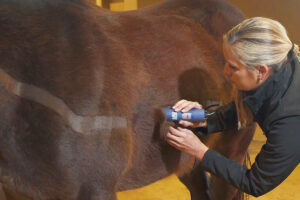 Keep these tips in mind for body clipping: ◆ Make sure to use clippers that are specifically designed for body clipping, not small face and leg trimmers. ◆ Have one or two freshly sharpened or brand-new sets of blades ready to go. ◆ Start with a squeaky-clean horse: bathe with shampoo in a heated wash rack, or bucket bathe with heated water. To bucket bathe, scrub back and forth against hair grain with well wrung-out towels, switching out frequently for clean ones. Make sure your horse is completely dry before clipping, and have winter blankets ready for stabling and turnout. Check out this article for more detailed steps to a great body clip. |
Winter Coat LengthIt’s easy to think that cold temperatures cause your horse to grow a winter coat, but that’s not actually true. If it were, your horse wouldn’t start to grow a winter coat until winter had already begun—and by then, it’s too late. Instead, the number of daylight hours control your horse’s coat production. As soon as the days begin to shorten, your horse’s body produces extra amounts of the hormone melatonin, and that triggers coat growth. By the time winter has really set in, he has a nice fluffy coat all prepared. The reverse happens in the spring to shed out the coat. This process also governs how much coat the horse puts on; northern locations experience shorter winter days than southern locations, so northern horses generally grow longer coats. Amazing! Of course, every horse is an individual, and certain breeds may inherently put on woolier coats than others (we’re looking at you, ponies and draft horses), but the overall process depends on daylight levels, not temperature. |




